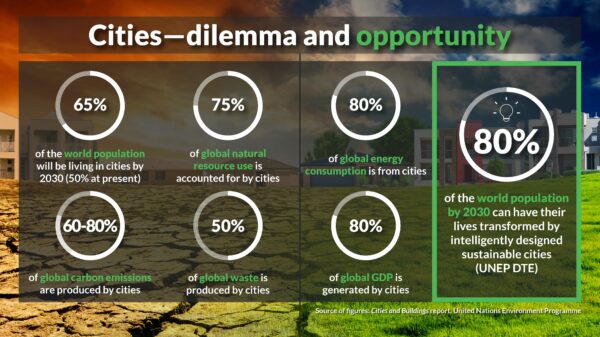Using science to transform greenfields and cities
Over the past few years one question that has come up is: ‘why would a national science and innovation agency like CSIRO be involved in what appears to be a greenfield development at Ginninderra on the outskirts of Canberra?’
It’s not a difficult question to answer when you consider what CSIRO is, what it has done in the past and what it is planning to do in the future.
CSIRO and its forerunner Commonwealth science organisations has been harnessing science to solve some of the nation’s greatest challenges for 100 years. Whether it was helping eradicate Prickly Pear or other agricultural pests and weeds, inventing Aerogard, Hendra vaccine, the CSIRO Total Wellbeing diet and fast WIFI, our innovation has improved the lives of people in Australia and throughout the world.
We have been an important part of the Canberra community as we have developed our world-leading plant, animal, insect, agricultural and environmental expertise since 1927. From our foundation site at Black Mountain we spread to multiple locations (some since closed) from Dickson, Yarralumla, Crace, Campbell, and Ginninderra, through to our involvement with NASA and even the coverage of the moon landing from the Canberra Deep Space Communication Complex at Tidbinbilla.
A common thread through CSIRO’s history is our ability to work with others to solve problems and find new solutions. This is capital ‘C’ Collaboration! Importantly, the ‘I’ in our name stands for ‘industrial’ – so it’s no surprise that we work closely with a wide range of industries and industry collaborators.
All this begs the questions for Ginninderra: ‘What is the national innovation challenge that can be tackled through science here?’ and ‘which are the industries we can work with on solutions?’
What is the great national challenge at Ginninderra?
The science challenge is one of the most formidable ever – to make our cities and urban areas more sustainable for our people, the environment and the resources and future of the planet.
The role of cities and their citizens in our global dilemma can be seen in this infographic below (based on figures quoted in the United Nations Environment Programme report: Cities and Buildings).

The role of cities and their citizens in our global dilemma.
According to that report, cities are where most of the growing world population lives (two thirds of the world by 2030), they consume 75% of global resources, use 80% of energy, and they produce about 75% of greenhouse gas emissions and 50% of world waste.
These same challenges present great opportunities for us to transform city performance along with all the flow-on benefits, through better design and innovation.
CSIRO has a wealth of science knowledge, data, technology and innovation that it can contribute to the ‘whole-of-system’ solutions that are needed. That knowledge and innovation covers fields from mining, materials and manufacturing, energy and renewables, city, land, water, oceans, atmosphere and space; to digital and data solutions, agriculture and food production and heath and biosecurity.
CSIRO also owns and manages a large portfolio of properties, facilities and science platforms that underpin the delivery of our science and innovation. One of our priorities is to make sure we have high quality infrastructure that is used cost-effectively for the benefit of science and the nation.
As an underutilised Commonwealth research asset, CSIRO’s Ginninderra Field Station provides us with an incredible opportunity to bring our science and innovation into real world applications onsite. It’s an opportunity to employ science to push design and delivery to new limits and realise improved social, economic and environmental benchmarks and outcomes.
Ginninderra is a key site among a portfolio of greenfield, urban and inner city locations where CSIRO intends to work with a wide range of partners to push the horizons of urban sustainability.
Collaboration and partnerships are going to be vitally important to the success of this work. We are already involved with a wide range of government, non-government, community and interest groups and industries with a stake and interest in urban sustainability.
For Ginninderra, one of our key collaborators will be an eventual joint development partner. Rather than a ‘property developer’ per se, we are seeking a partner that will be able to help us realise this sustainability vision through practical planning, design and on-ground application of the science.
We are excited by the prospect of new and emerging opportunities to work with collaborators in the property and construction industry. This is now Australia’s largest industry contributing more than a million jobs and $182 billion a year (11% of GDP) to the Australian economy.
We are equally excited about working with the ACT community, government, research and environmental stakeholders in developing something unique and remarkable at Ginninderra.
Citizen-led science is already underway at Ginninderra with the community-led grassland restoration project and this is something we would like to nurture and expand. Community inspired innovation could also help drive the prospect of a greater range of affordable housing options.
The Ginninderra site is a perfect example of an opportunity for science to make a difference for people and it helps us progress our mission to innovate for tomorrow while helping improve today.
So the question really should be: “why wouldn’t we be involved?’
